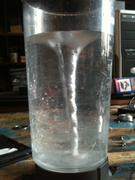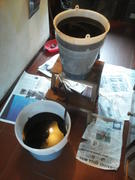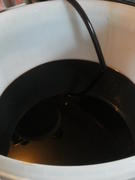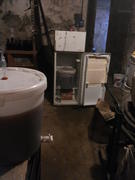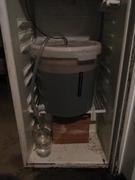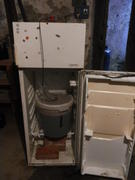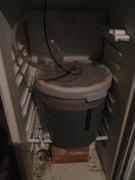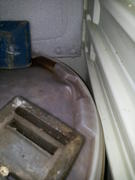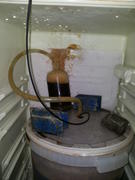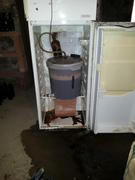Nico93
Well-Known Member
- Joined
- May 8, 2013
- Messages
- 372
- Reaction score
- 89
Hi! I'm going to brew this type of style in the next month!
this is the recipie:
Ricetta per stout, finals liters 20,0 (pre-boil liters 24,5)
efficienza 72%, bollitura 60 min.
OG 1,128; IBU: 100,4 (Tinseth); EBC: 124;
Malti:
4000 gr Pale Malt, Maris Otter, 1,038;
700 gr Chocolate Malt, 1,030;
700 gr Roasted Barley, 1,028;
400 gr Crystal 75L, 1,034;
1000 gr Peated, 1,038;
500 gr flaked barley, 1,033;
3000 gr Light, 1,037;
200 gr sugar Candy, Amber, 1,040;
Luppoli e altro:
14 gr Goldings, East Kent, 6,0 %a.a., 30 min, Kettle;
14 gr Goldings, East Kent, 6,0 %a.a., 10 min, Kettle;
100 gr Columbus (Tomahawk), 14,0 %a.a., 60 min, Kettle;
20 gr Chinook, 13,0 %a.a., 60 min, Kettle;
yeast:
Scotish Ale
Mash Steps:
50 °C 10 min
68 °C 80 min
78 °C 15 min
what do you think about? what i have to change?
Thanks You So much from Italy, and sorry for my english
this is the recipie:
Ricetta per stout, finals liters 20,0 (pre-boil liters 24,5)
efficienza 72%, bollitura 60 min.
OG 1,128; IBU: 100,4 (Tinseth); EBC: 124;
Malti:
4000 gr Pale Malt, Maris Otter, 1,038;
700 gr Chocolate Malt, 1,030;
700 gr Roasted Barley, 1,028;
400 gr Crystal 75L, 1,034;
1000 gr Peated, 1,038;
500 gr flaked barley, 1,033;
3000 gr Light, 1,037;
200 gr sugar Candy, Amber, 1,040;
Luppoli e altro:
14 gr Goldings, East Kent, 6,0 %a.a., 30 min, Kettle;
14 gr Goldings, East Kent, 6,0 %a.a., 10 min, Kettle;
100 gr Columbus (Tomahawk), 14,0 %a.a., 60 min, Kettle;
20 gr Chinook, 13,0 %a.a., 60 min, Kettle;
yeast:
Scotish Ale
Mash Steps:
50 °C 10 min
68 °C 80 min
78 °C 15 min
what do you think about? what i have to change?
Thanks You So much from Italy, and sorry for my english





